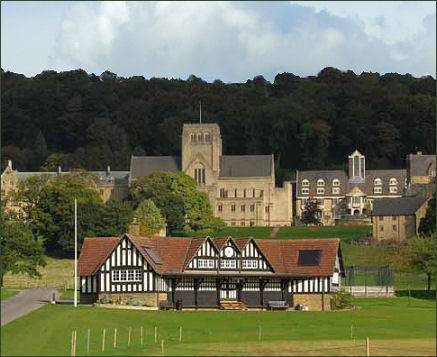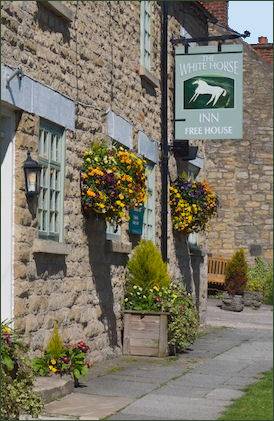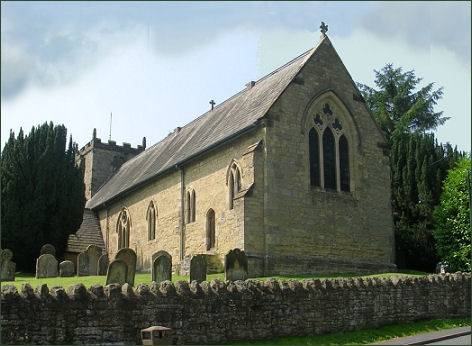Ampleforth
OS grid reference:- SE 577 786

 Ampleforth lies in the Ryedale district, around 23 miles (37 km) to the north of York. The village is situated on the edge of the beautiful North York Moors National Park
Ampleforth lies in the Ryedale district, around 23 miles (37 km) to the north of York. The village is situated on the edge of the beautiful North York Moors National Park
The village is recorded in the Domesday Survey of 1086, where it is referred to as Ampreford, meaning the ford of the sorrel plant.
Ampleforth Abbey is the village's Catholic parish church, it was established as a monastery for Benedictine monks in 1802, by Anne Fairfax, daughter of Charles Gregory Fairfax, 9th Viscount Fairfax of Emleyand. The monastery was completed in 1897 and is open regularly to visitors for tours. The interactive Visitor Centre tells the story of Ampleforth Abbey and details the day to day life of the Monastic Community. The abbey grounds contain beautiful lakes, trails and woodlands. The Tea Room offers a selection of food and beverages, the Abbey Shop stocks a selection of items, from the spiritual and devotional to giftware, greetings cards and souvenirs. Admission to the Abbey and Grounds is free.
Ampleforth Orchards is the country's northern-most commercial orchard and covers more than 2 hectares, it grows more than 40 varieties of apples, including Ribston Pippin, originating from a tree grown locally at Ribston Hall in the seventeenth century. Some of the apples are sold to visitors and others are used in the production of Ampleforth Abbey Cider and Ampleforth Cider Brandy.
Ampleforth Abbey also established a school in the village, which is now known as Ampleforth College, a leading independent boarding school.
Ampleforth has two pubs, the White Swan and the White Horse, which dates back to 1768 and takes its name from the large white horse which was carved into the hillside a few miles to the west. Both serve good food.
St. Hilda's Church
 The Church of England village church is dedicated to St Hilda, (circa 614-680) who was the founding abbess of Whitby Abbey. The daughter of Hereric, nephew of King Edwin of Northumbria, she was an important figure in the conversion of Anglo-Saxon England to Christianity.
The Church of England village church is dedicated to St Hilda, (circa 614-680) who was the founding abbess of Whitby Abbey. The daughter of Hereric, nephew of King Edwin of Northumbria, she was an important figure in the conversion of Anglo-Saxon England to Christianity.
The church dates back to Saxon times, with elements from the thirteenth century.
William de Courtenay, served as a Prebend of St. Hilda's Church from 1362-1370. He was later appointed archbishop of Canterbury in 1381 and headed the so-called "Earthquake Synod", which condemned the opinions of Wycliffe and attacked the Lollards at Oxford.
Another prebendary was the Renaissance scholar Peter Carmeliano, who served the church for 30 years, from 1498-1528.
The fine tower-arch and the north doorway all date from the twelfth century. The church contains the worn effigy of a fourteenth century knight who may have died in the Battle of Byland in 1322. A sword hangs from his belt, while over his shoulder peers the head of a woman wearing a wimple
and a small square cap. In the floor towards the west end of the north aisle is a tomb-slab of a priest with a cross and a chalice.
